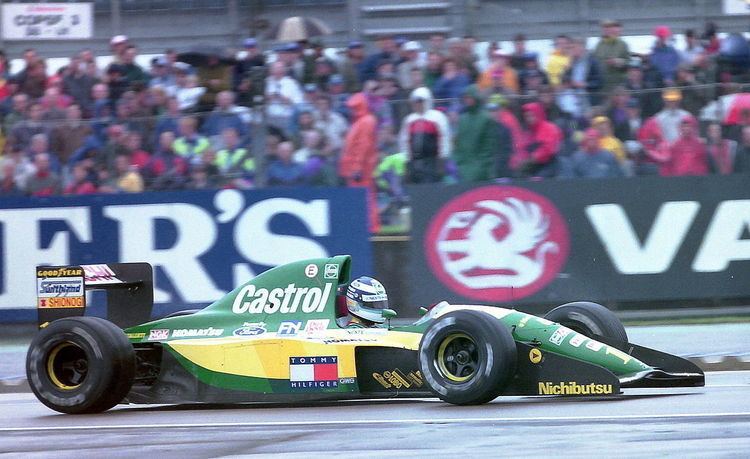Designer(s) Chris Murphy Successor 109 | Predecessor 102D | |
 | ||
The Lotus 107 was a Formula One car used by Team Lotus. Designed for the 1992 Formula One season, and used throughout most of 1992, 1993 and part of 1994, it brought in a final, short-lived period of competitiveness for the team in Formula One.
Contents
Design
The 107 is often, mistakenly, attributed to the design work of Chris Murphy. However the majority of the 107 was heavily influenced by the Leyton House CG911 which had competed in the 1991 Formula One season and was largely designed by the team's technical director Gustav Brunner. What facilitated this design migration was the collapse of Leyton House Racing following owner Akira Akagi's arrest in September 1991 and the exodus of senior staff (including Chief Designer Chris Murphy and Jean Claude Martens, but significantly not Gustav Brunner) to Team Lotus.
Unquestionably beautiful the 107 had smooth sweeping lines a world away from the long developed and antiquated Lotus 102D whose heritage can be traced to the 1990 Formula One Season. Modification of the basic Leyton House CG911 to accommodate the Ford Cosworth HB V8 engines, of a similar - if older - specification to those being used by Benetton, was complete by the unveiling of the car at the 1992 San Marino Grand Prix.
Development
With a top notch driving squad of Johnny Herbert and a future double F1 World Champion Mika Häkkinen, the Lotuses were able to bring in some good results: at several races the twin cars were able to run in formation on the tail of the leading pack, at least in the early parts of the races. Reliability was limited.
Lotus 107B and 107C
The car was developed over succeeding seasons into B and C variants, the latter with Mugen-Honda power in place of the Cosworth. As was standard practice at the time, the team employed the active suspension technology that they had introduced to F1 back in 1987 on later variants, but the budget was not enough to make it really work, and besides, it was now far from being a unique capability. According to Alex Zanardi's autobiography My Story, the focus on this system was to the detriment of other aspects of the car.
The team's financial difficulties dragged it under at the end of 1994. The Lotus 109, the last Formula One car of the team, which ran in the latter part of 1994, was a further derivative of this design.
Complete Formula One results
(key)
